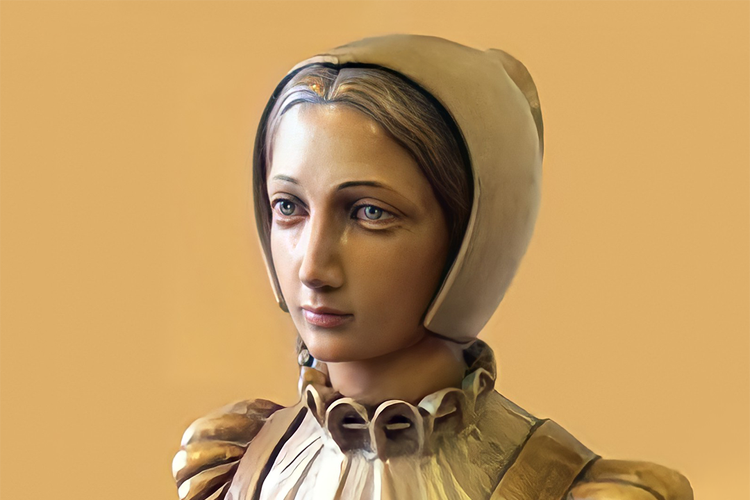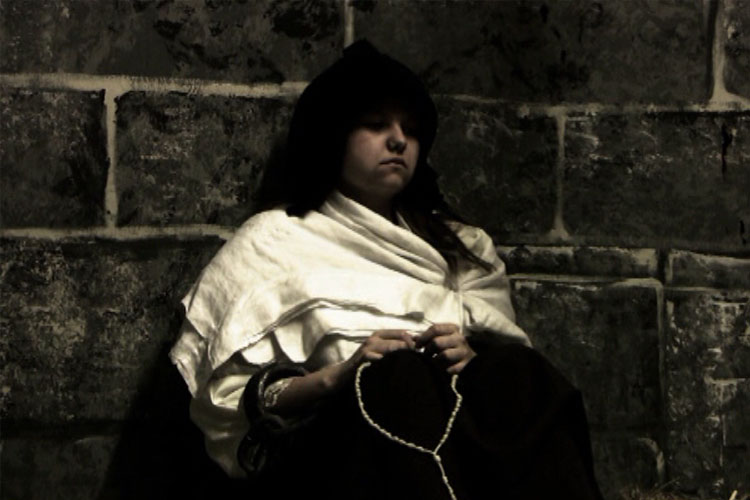
Feast Day: 30 August
Converting in dangerous times
Saint Anne Line is believed to have been born as Alice Higham and was the oldest daughter of a Puritan landowner. During her early 20s she, her brother and her husband all converted to Catholicism. For making such a choice, she lost her dowry and her brother and husband were disinherited. It was during this time that she started going by the name of Anne instead of Alice.
Things took a turn for the worse when, on 2 February 1601, both her brother and husband were imprisoned for attending Mass. Her brother, William Higham, was eventually released but kept under watch while her husband, Robert Line, was banished to Flanders. He would remain there until his death, but during this time he continued to send money to his wife back home to ensure her well-being.
Sheltering priests
After Robert’s death, Anne became very active in sheltering clandestine Catholic priests, which was illegal in the reign of Elizabeth I. She began by running a house set up by a priest who was eventually captured and sent to the Tower of London. Here she sheltered many priests and cleverly hid them from the authorities.
After the priest she was filling in for escaped the Tower of London, she gave up managing the house. By then she was known to so many people that it was unsafe for the said priest to frequent any house she occupied. Instead, St Anne hired apartments in another building and continued to shelter priests there.
Caught and imprisoned
Saint Anne Line was finally caught when, one day, too many Catholics turned up for Mass and the locals got suspicious. The guards were called but thanks to St Anne’s forethought most people, and even the priest, Fr Francis Page, were able to escape.

Sadly both she and another woman, Margaret Gage, were caught. Margaret was released on bail but St Anne was sent to Newgate Prison. Eventually she was brought to trial where even though she was weakened by time in jail and fever, she remained defiant. She told the court that so far from regretting having concealed a priest, she only grieved that she “could not receive a thousand more.” Sir John Popham, the judge, sentenced her to death for the felony of assisting a seminary priest.
Defiant in the face of death
St Anne was hanged on 27 February 1601. She was executed immediately before two priests, Fr Roger Filcock and Fr Mark Barkworth, who received the more severe sentence of hanging, drawing and quartering. At the scaffold she repeated what she had said at her trial, declaring loudly to the bystanders: “I am sentenced to die for harbouring a Catholic priest, and so far I am from repenting for having so done, that I wish, with all my soul, that where I have entertained one, I could have entertained a thousand.”
Why Saint Anne Line is important to me
A reflection from someone in our young Catholic community
There is something particularly inspiring about the lives of saints from this country, particularly of those who chose to give up their life for what they believed. Anne was born and lived in Essex and London. She was courageous and helped in any way she knew how. Her life is, and will always be, a challenge to me to never be ashamed of my faith and always stand up for it, despite what others may think.